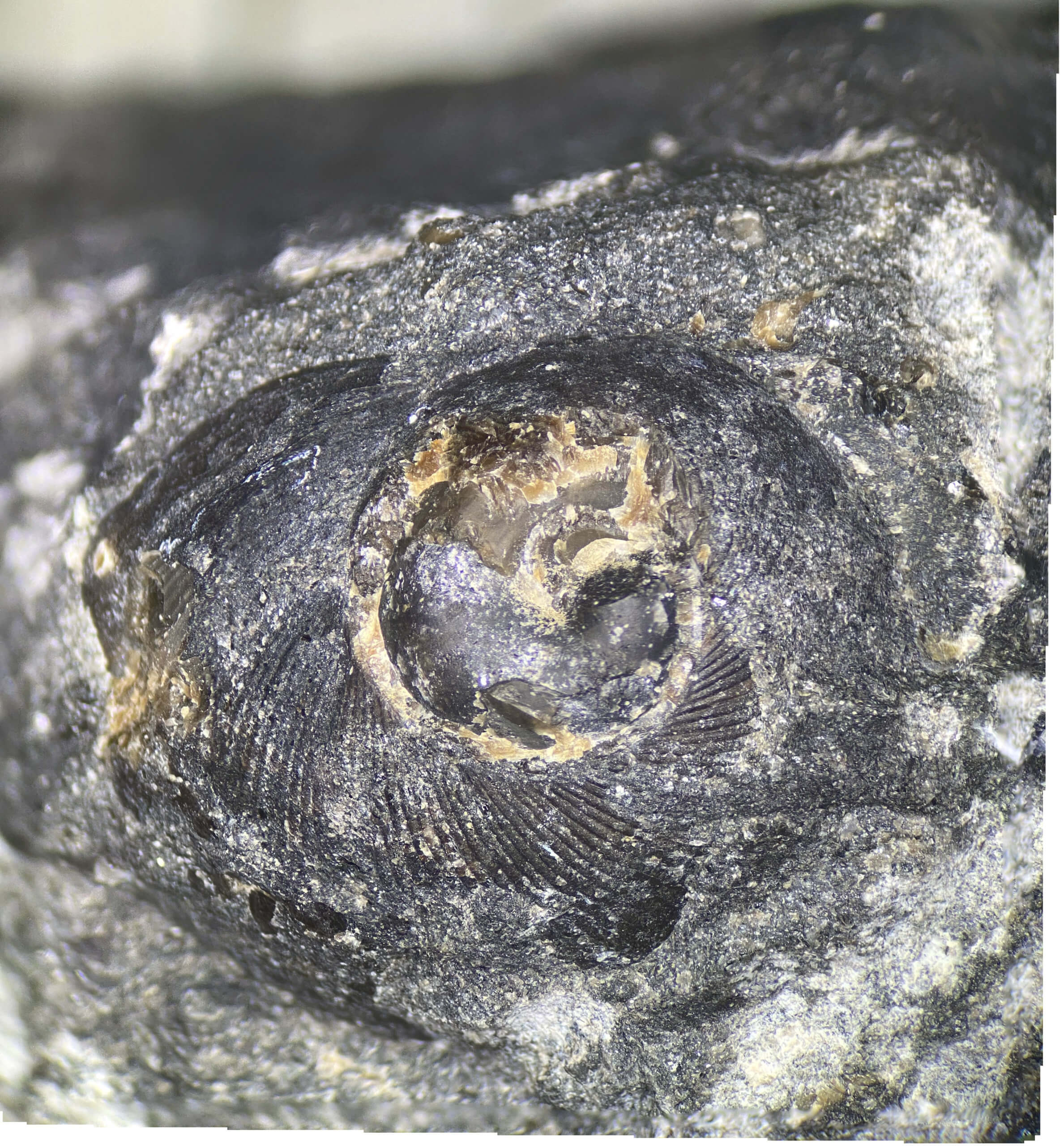Update: The focus genus for identification has changed to Naticopsis. Research is still pending in an effort to better understand this genus. The research below supports information about Mourlonia and will be preserved later.
Catalog Number: CG-0057
This is an exciting post, as it starts to describe what may become a new species of Mourlonia. The genus Mourlonia has a wide geologic time range, from 466 MYA to the Permian time period. Several examples have been defined from the Carboniferous, and I am spending time now researching these. It seems probable that a Pennsylvanian example of Mourlonia has not been found (or at least properly identified) in this part of Pennsylvania, Ohio and West Virginia.
The Fossilworks website, a way to search the Paleobiology Database, wrongly reports an example from the Quaternary. There is only one example reported from the Quaternary, and this was published back in 1877, whereas the genus was first described by L. G. de Koninck in 1883. The next youngest is from the Permian. I suspect the genus died out in the Permian-Triassic Extinction event.
Fossilworks is akin to a data glacier, slowly moving, picking up every piece of information it can grab onto. Things get stuck there and it will be a while until it gets corrected. But for now, I’ll assume this genus persisted until at least the Permian.
Possible Osagean, middle Mississipian Specimen from Ohio?
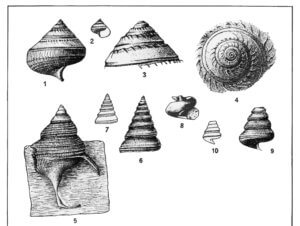
Examples are reported from the Osagean, which is the middle part of the Mississippian, early Carboniferous. This was described in a publication by Pete Wagner in 1953. Below are 10 figures illustrated, representing three distinct species found in the Logan Formation, Sciotoville, Ohio. This town is located in extreme Southern Central Ohio, with Kentucky being a stone’s throw across the Ohio River.
However, these taxonomic opinions have not withstood the test of time. While these were identified as Mourlonia, they were largely debunked by later experts. Figures 1-4 are actually Glabrocingulum.
Ellis Yochelson, one of the foremost authorities on Paleozoic snails in the 20th century, as described by John L. Harper, debunked figure 5 and figures 6-10. For figure 5, E. Yochelson and M. Gordon Jr. write the following:
Mourlonia ” textus Hyde may not even be a pleurotomariacean ; the drawing that supposedly shows a selenizone ( Hyde , 1953 , pl . 46 , fig . 5 ) is not convincing .
Mackenzie Gordon, Jr. and Ellis L. Yochelson, 1987, Late Mississippian Gastropods of the Chainman Shale, West-Central Utah
Yochelson also called out figures 6-10 to be actually Spiroscala. So while the figure is interesting. there is a high likelihood that none of them are Mourlonia.
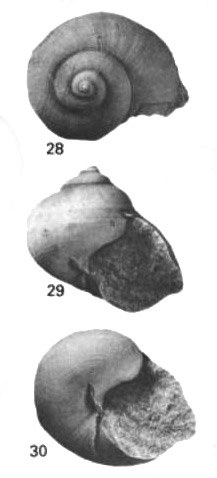
Narrowing Down The List of Suspects
Known examples exist from the Carboniferous in the Paleobiology Database. International examples include Antarctica, Australia, Iran, Ireland, Poland, and the United Kingdom. Within the United States, examples are found in Alabama, Arkansas, Missouri, Nevada, Texas, Utah, and Wyoming. However, some are listed specifically, and for the Westphalian (approx 318.1 to 306.9 MYA). there is a listing for Kentucky.
The Kentucky example is from the Coal Cliff/Hensley Member. In 1979, several specimens were sent to Charles Rice of the USGS for identification. USGS Paleontology and Stratigraphy Branch describe these under report number PR-0205. Unfortunately, I have not been able to obtain the report yet. It’s likely I won’t find photos. They also forgot to mark the genus in their formation correlation chart:
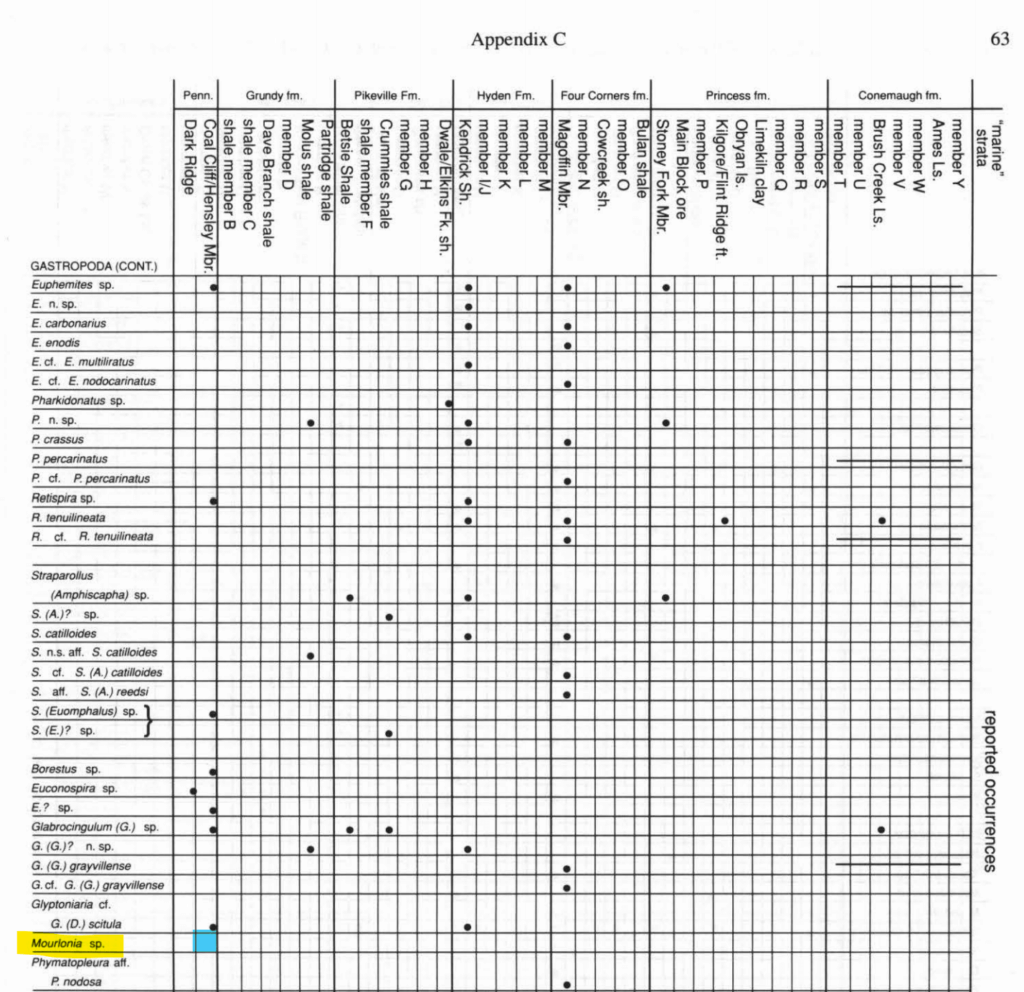
The candidate Mourionia specimen.
Below is the photo of the specimen when I first found it. It separated from its spire as part of a hammered limestone split. When I first saw it, I noticed the detailed whorl pattern. The growth lines are present in a prosocline (forward slanted) pattern. Gastropod shells have a whole dictionary of terms to learn. Here are the 5 types just for growth lines.
| Term | Definition |
|---|---|
| Opisthocyrt | Arched backward |
| Optisthocline | Learning away from growth direction |
| Orthocline | Straight Down |
| Prosocline | Leaning towards growth direction |
| Prosocyrt | Arches forward |
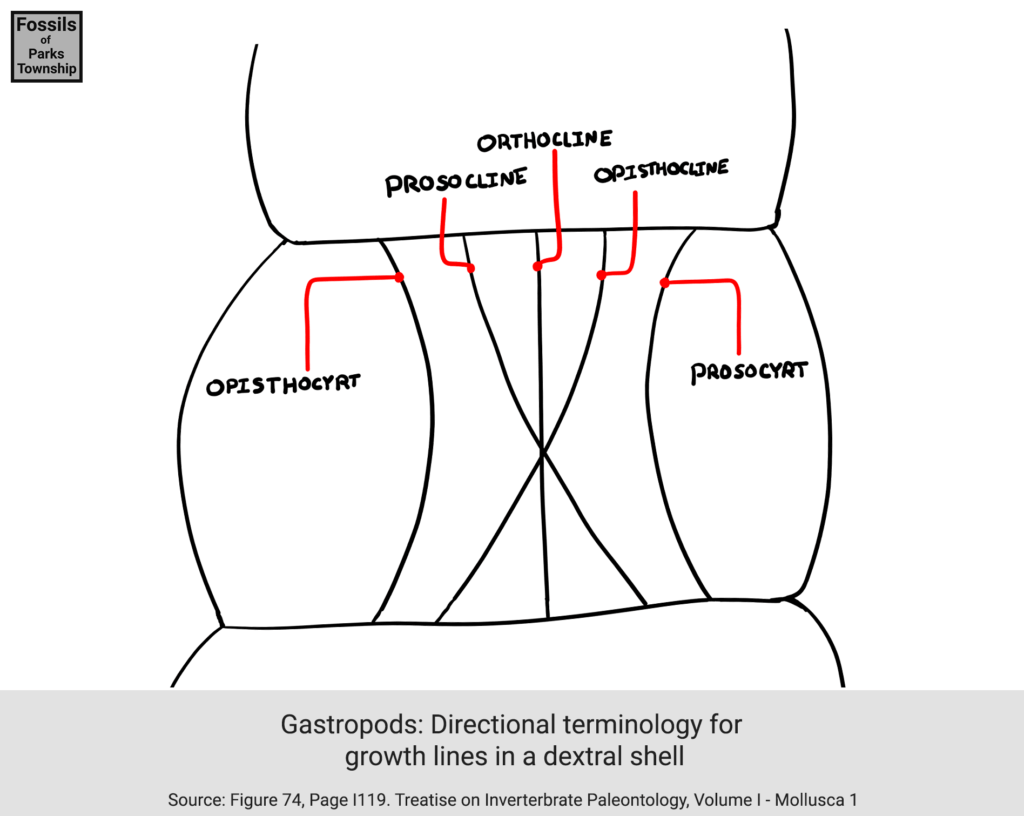
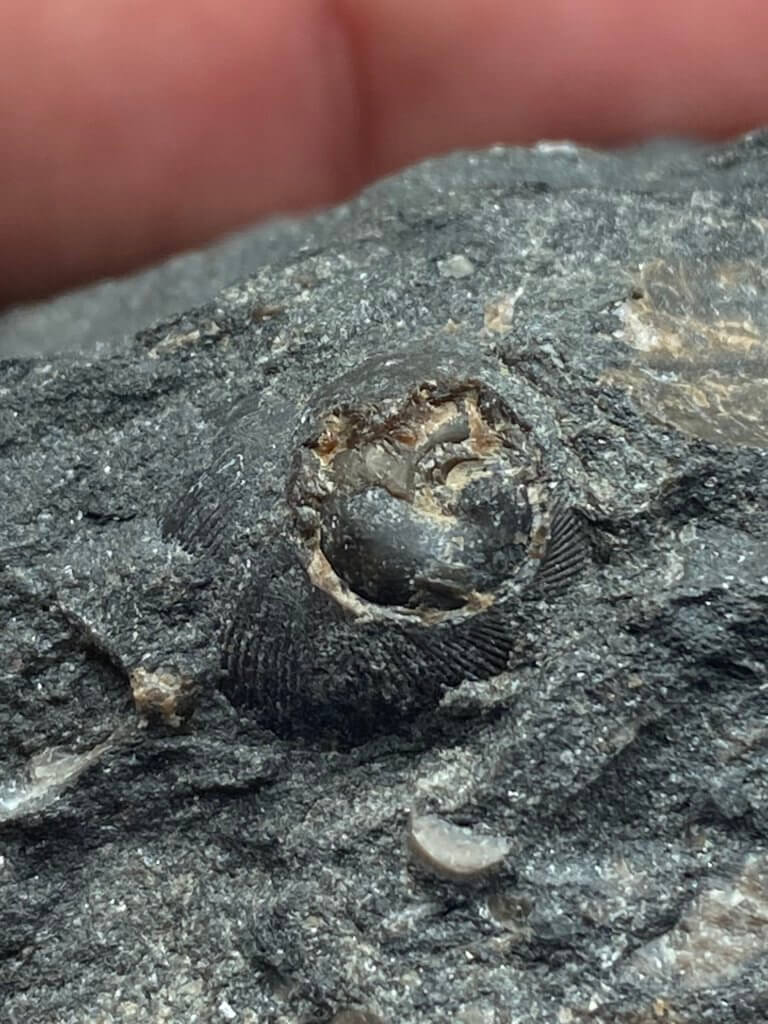
Discovery and light preparation work
After viewing the interesting and beautiful shell pattern from a fresh split piece of Brush Creek Limestone, I set the piece aside. I then cut a rectangle or matrix from the rock to save the specimen in a much smaller form. Typically when I try to further extract gastropods, they will shatter. In turn, I either set these aside or wait for something better to come around.
I sent a photo of the growth lines to John A. Harper, someone who has written several papers on Paleozoic Gastropods. In the evening, I lightly prepped the specimen. I was careful to not hit the shell and only remove what was already easy to remove. Upon inspection, there were several pieces of fragment shell pieces near the specimen. This makes it very easy to remove the matrix closer to the shell to see more of the pattern. If only I could get down to the selenizone, full identification would be much more possible.
Later that night, John got back to me and said it’s likely a genus that has never been found in the tri-state area. After taking further photos and shooting a small video to show it better dimensionally, he determined that it’s likely this is the first Mourlonia found in this area. The next step would be to present the specimen to him in person, however, the current shelter-in-place rules for Covid-19 make that difficult. So for now, I shall keep it safe and wait for a more appropriate time.
Gallery of Mourlonia Specimen Photos
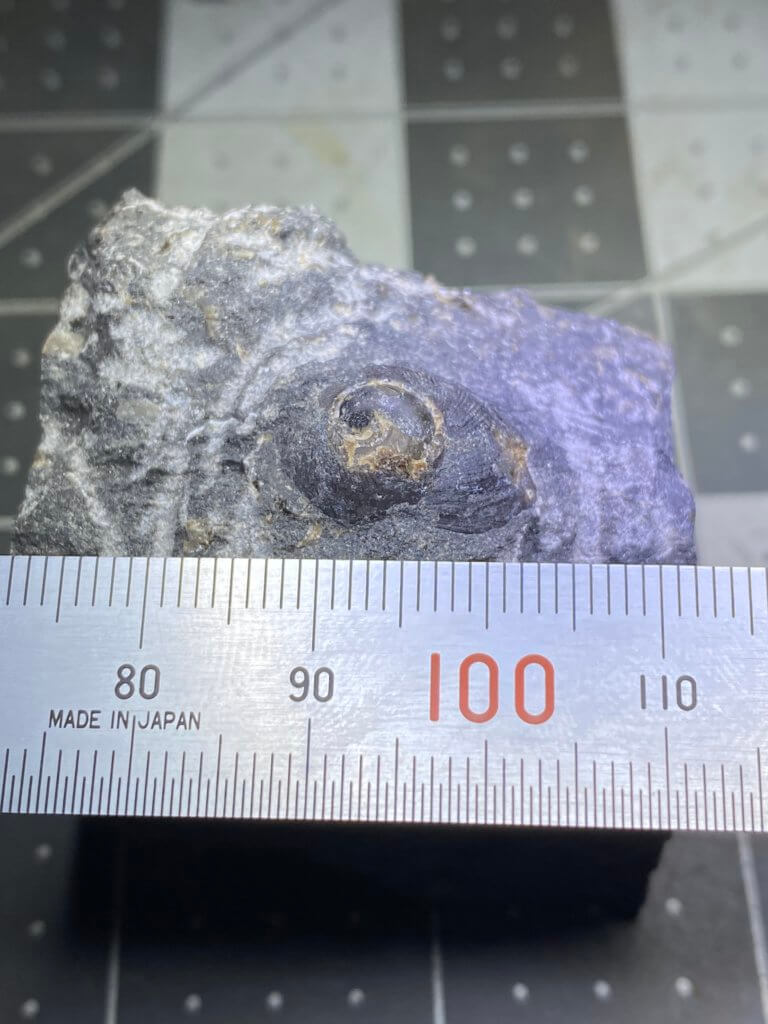
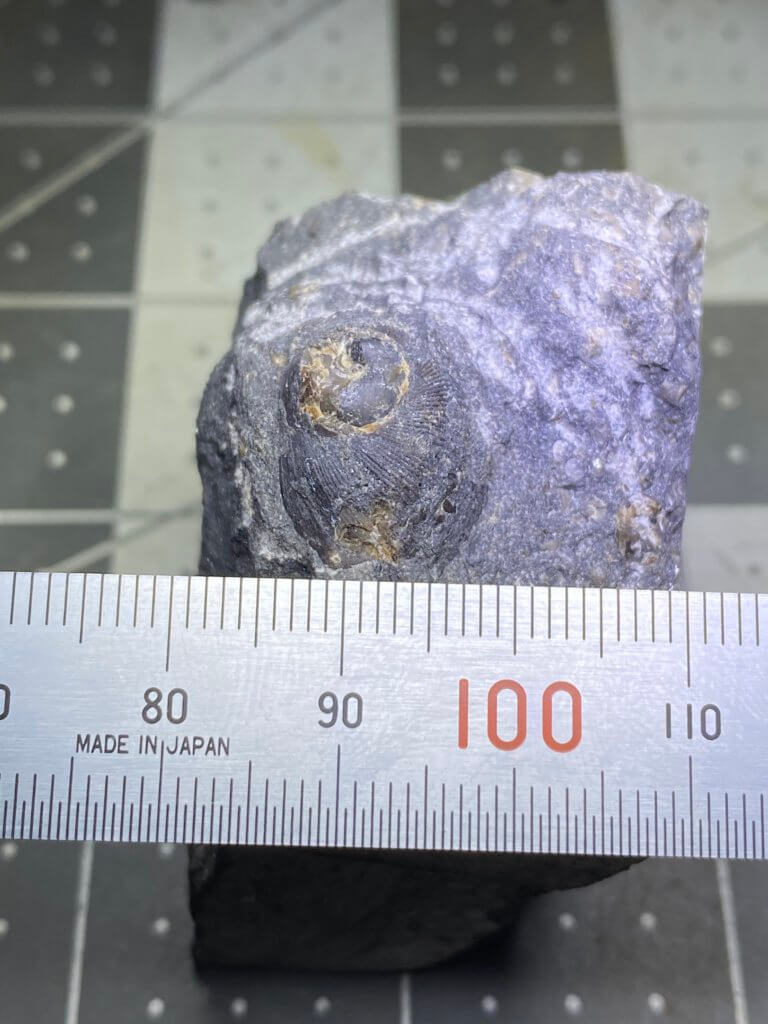
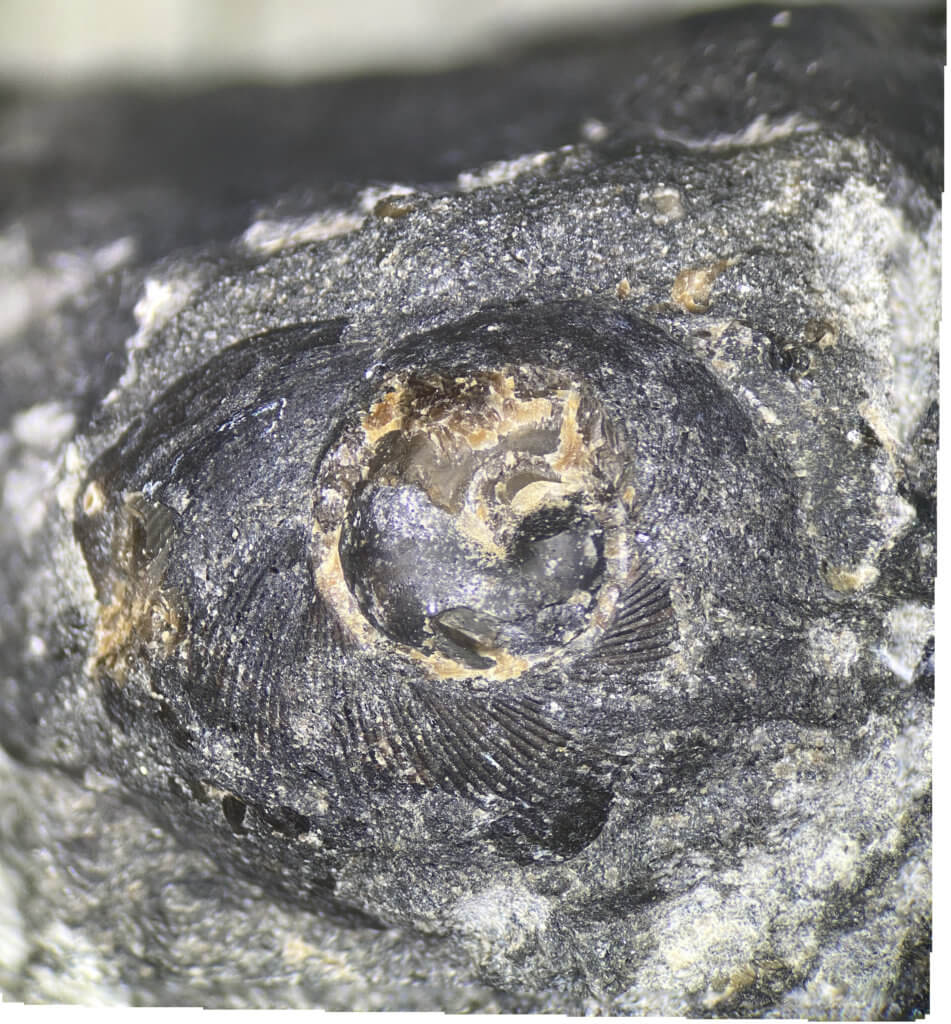
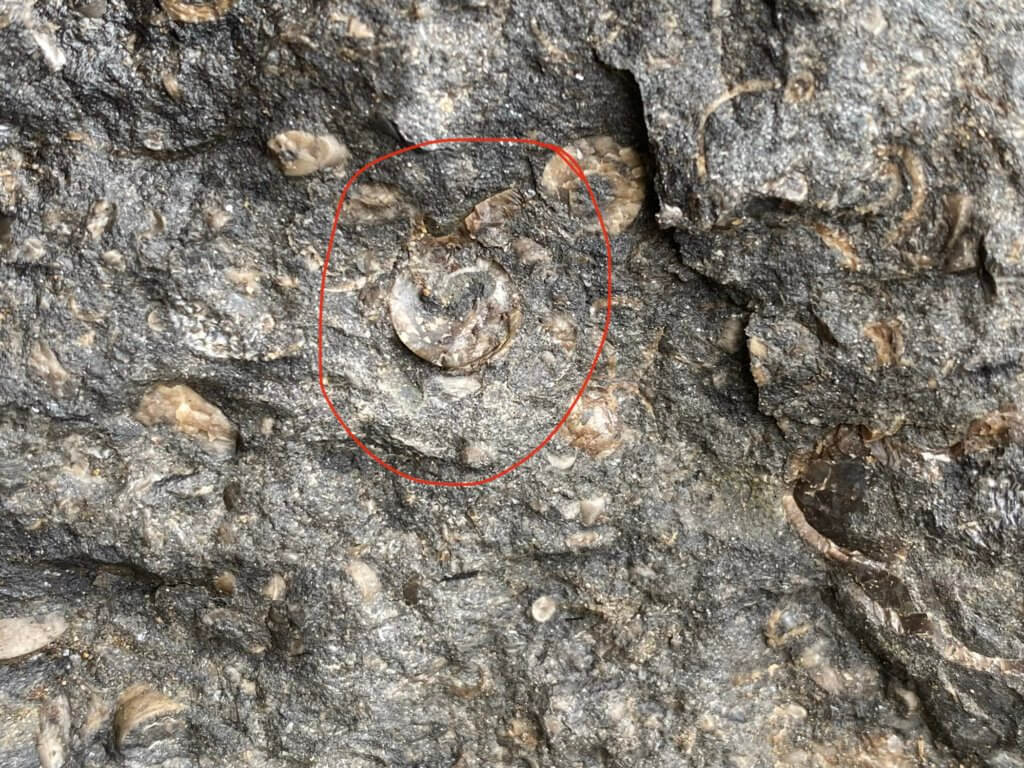
References for Mourlonia
- Genus Page – Fossilworks
- 2001, S. R. A. Kelly, P. A. Doubleday, C. H. C. Brunton, J. M. Dickins, G. D. Sevastopulo and P. D. Taylor. First Carboniferous and Permian marine macrofaunas from Antarctica and their tectonic implications. Journal of the Geological Society of London, 158(2):219-232
- 1991, Chesnut, Donald R. Jr., “Paleontological Survey of the Pennsylvanian Rocks of the Eastern Kentucky Coal Field: Part 1, Invertebrates“. Kentucky Geological Survey Information Circular. 46.
- 1987, Gordon, Jr., Machenzie, Yochelson, Ellis L., 1987, Late Mississippian Gastropods of the Chainman Shale, West-Central Utah, U.S. Geological Survey Professional Paper 1368
- 1953, J. E. Hyde., Mississippian formations of central and southern Ohio. Ohio Division of Geological Survey Bulletin 51:1-355
- 1813, Sowerby, James, The mineral conchology of Great Britain; or, Coloured figures and descriptions of those remains of testaceous animals or shells, which have been preserved at various times and depths in the earth, The mineral conchology of Great Britain, Page 34, Plate X

